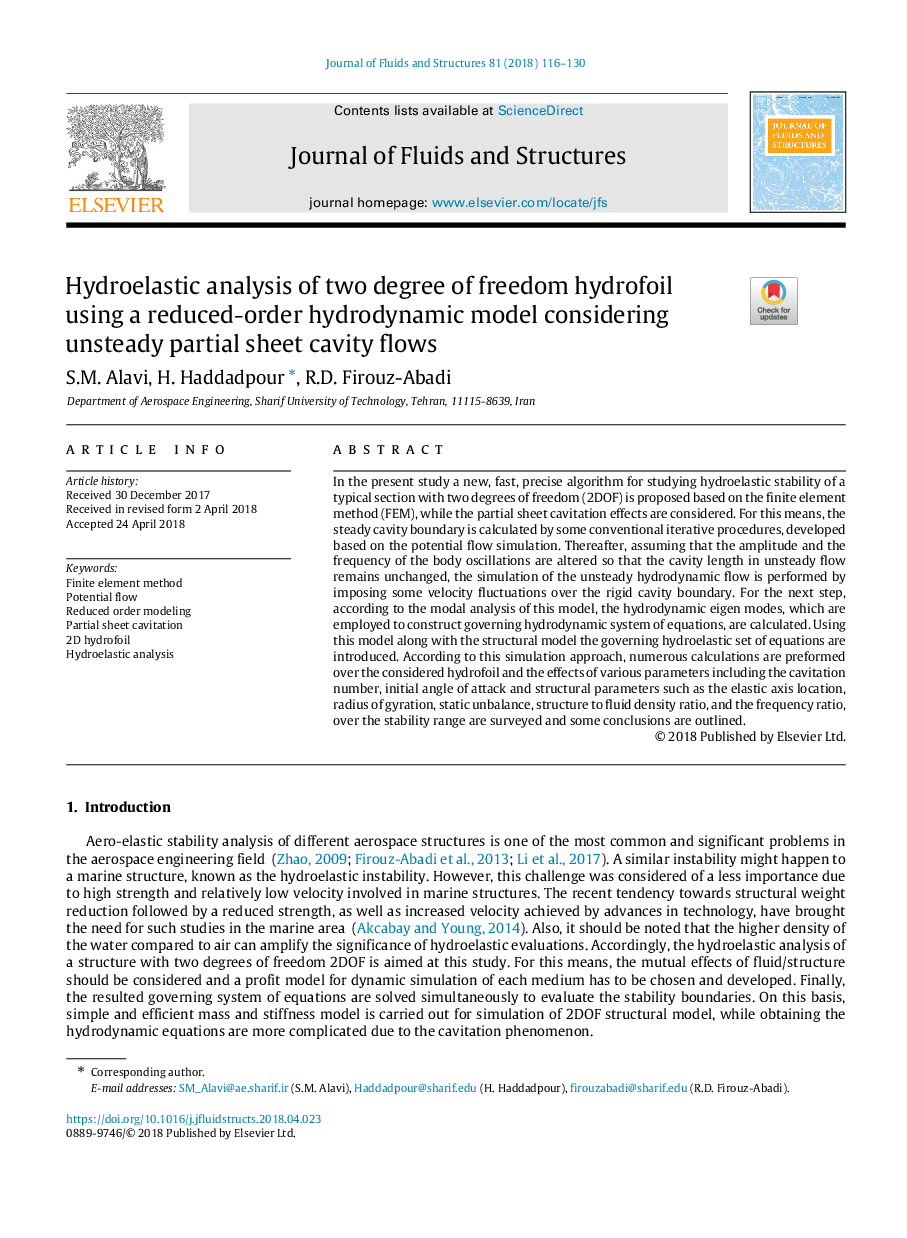| Article ID | Journal | Published Year | Pages | File Type |
|---|---|---|---|---|
| 7175690 | Journal of Fluids and Structures | 2018 | 15 Pages |
Abstract
In the present study a new, fast, precise algorithm for studying hydroelastic stability of a typical section with two degrees of freedom (2DOF) is proposed based on the finite element method (FEM), while the partial sheet cavitation effects are considered. For this means, the steady cavity boundary is calculated by some conventional iterative procedures, developed based on the potential flow simulation. Thereafter, assuming that the amplitude and the frequency of the body oscillations are altered so that the cavity length in unsteady flow remains unchanged, the simulation of the unsteady hydrodynamic flow is performed by imposing some velocity fluctuations over the rigid cavity boundary. For the next step, according to the modal analysis of this model, the hydrodynamic eigen modes, which are employed to construct governing hydrodynamic system of equations, are calculated. Using this model along with the structural model the governing hydroelastic set of equations are introduced. According to this simulation approach, numerous calculations are preformed over the considered hydrofoil and the effects of various parameters including the cavitation number, initial angle of attack and structural parameters such as the elastic axis location, radius of gyration, static unbalance, structure to fluid density ratio, and the frequency ratio, over the stability range are surveyed and some conclusions are outlined.
Related Topics
Physical Sciences and Engineering
Engineering
Mechanical Engineering
Authors
S.M. Alavi, H. Haddadpour, R.D. Firouz-Abadi,
